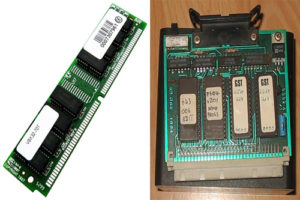Ensuring the security of the data storage, one way to keep it saved and protected is through the use of a computer memory. There are types of memory that would ease the access of the programs stored and assist the Central Processing Unit (CPU) to pile up and execute the encrypted instructions that the latter needs. These two general types are namely Read-only Memory also known as ROM and Random-access Memory also known as RAM.
A read-only memory refers to a volatile form of data storage in which, when the power is switched off, it might result in loss or deletion of data since these are not permanently written and these data are flexible to alteration at any time. Types of ROM include programmable ROMs (PROM), erasable programmable ROMs (EPROM) and electronically erasable and programmable ROMs. Meanwhile, in a random-access memory, it highlights a non-volatile form of data storage in which electronic information and contents are preserved even if the power is turned off. Data are read and permanently written, but such information cannot be changed or reprogrammed. Types of RAM include static and dynamic. RAM chips have greater and major edge as compared to ROM because the former can manage to read the data faster and efficiently.


